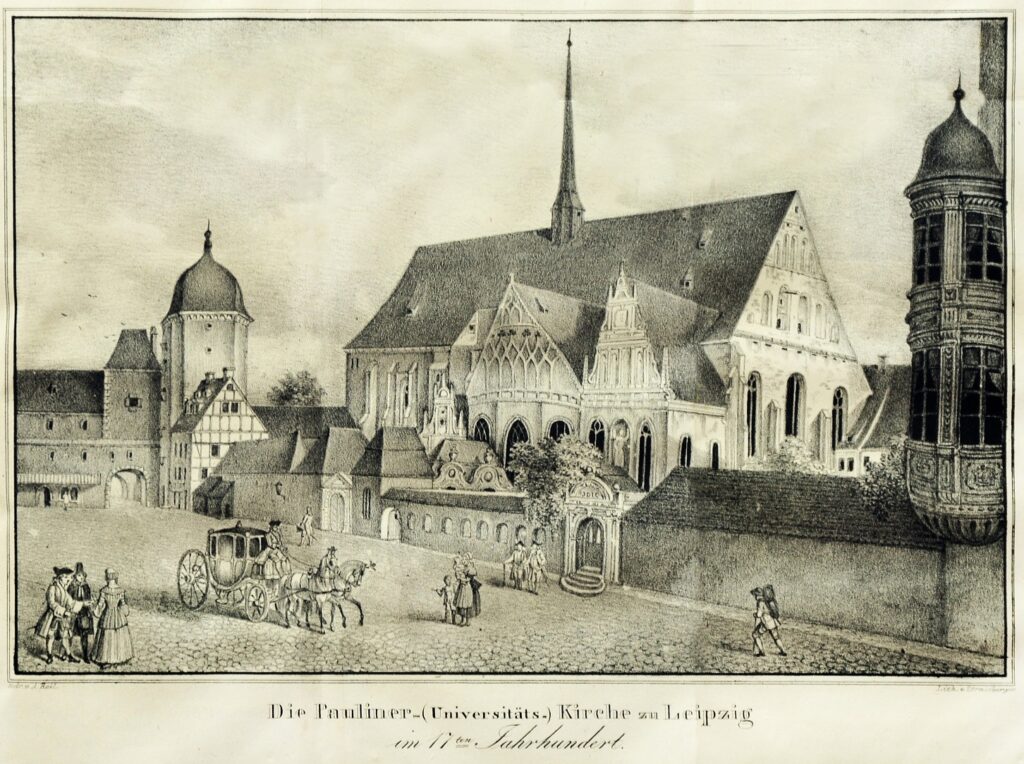As was usually the case for secular cantatas, this one is scored for large forces. 3 trumpets, timpani, 3 oboes (2 d’amore and one taille, or alto oboe), strings and basso continuo, plus a 4-part choir and 4 vocal soloists. It was performed on December 11th, 1726, probably in one of the buildings of the Unversity of Leipzig, to celebrate the position of Professor of Jurisprudence awarded to Dr. Gottlieb Kortte at the university. Dr. Kortte was popular among his students and there is speculation that the students themselves commissioned the work and possibly played at the performance.
The author of the libretto is unknown although some scholars attribute it to Picander (Christian Friedrich Henrici), frequent collaborator of Bach in Leipzig. Other theories point to one of Kortte’s students, Heinrich Gottlieb Schellhafer, who later wrote libretti for Telemann.
The cantata is set in the manner of the “dramma per musica” (a modest, congratulatory plot). The four solo singers represent allegorical figures: Happiness (soprano), Gratitude (alto), Diligence (tenor) and Honor (bass). The recitatives are longer than they would have been in a church cantata, and the text usually dives into allegories and images expanding on the subject of the poem, whose stanzas are set as arias.
The cantata opens with a chorus which is a striking adaptation of the 3rd movement of the Brandenburg Concerto (BWV 1046). The instrumentation is reworked (trumpets instead of horns, no violino piccolo, added flutes and timpani), the choir was added, and the key was changed from F to D.
The inner movements are organized as 3 recitative / aria pairs: the first pair is for the tenor, the middle one is a duet for the soprano and the bass, and the last one for the alto.
The tenor aria receives full string band accompaniment (there’s an oboe d’amore part in the BGA score, mostly doubling the first violin, which seems to be routinely omitted). Its long melismas on words like “path” and “course” illustrate the laborious journey dictated by “Diligence”.
Honor and Hapiness share the next pair of recitative and aria, each describing how Kortte embodies or will benefit from their blessings. The duetto, accompanied just by the basso continuo, is structured as A-B-A with the voices intertwining in section A and signing alternatively in section B. After the Da Capo, we are surprised by an instrumental interlude — the Trio from the final movement of Brandenburg 1. It has also been transposed to D major and the trumpets replace the horns.
After the interlude, the alto (Gratitude) takes center stage with the next recitativo/aria pair. The text of both the recitative and the aria addresses the Professor’s students. The aria is accompanied by 2 flutes and the violins and violas in unison. The strings have a staccato theme that clearly stands out, which some scholars interpret as the illustration of “engraving in marble”.
A final recitative for all four solo voices leads to the imposing closing chorus which involves the entire orchestra, the choir and the soloists, and exudes praise and celebration as demanded by the text.
